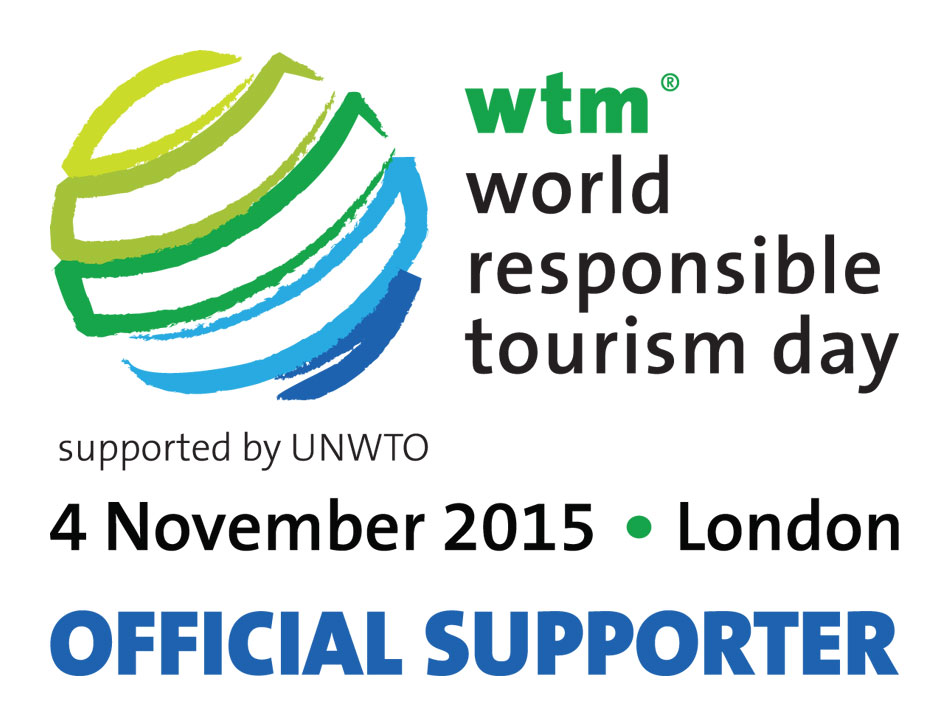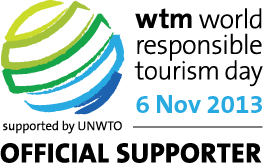Valentin Rasputin describing the nature of Tofalaria also compared it to cosmos in which all elements remain in shape of oneness, and Tofa people were perceived by him as carriers of distinct ontological type of conscience, able to live in harmony with mind and nature. “ TOFALARIA lies between 95°37′ and 100°05′ E and 51°53′ and 54°59′ N and is close to Central Asia. Encompassing an area of nearly 27,000 sq km, this beautiful area is mainly inhabited by the Tofa people; one of the smallest ethnic minorities on Earth. The Tofa people were traditionally peaceful in character, trying to avoid any violence and clashes from within their own The challenge faced by the Tofa From 1927 the Communist government made a number of decisions which affected all nomads. For the next 3 decades, the ancient Tofa reindeer-herding traditions almost vanished. The Soviet ideology required bringing all people together through collectivization. This made it easier for the state to control both economic plans and people. All individually-owned reindeer were commandeered by the Soviet state and united into one collective herd. In this way the Soviet Union was able to force the Tofa people and other reindeer herders (such as the Soyots, their nomadic relatives) into a collective way of life. This damaged the Tofa’s ethnic identity, integrity and traditional culture. For the Tofa people, reindeer herding is not just work, it is a traditional pattern of behaviour that determines the herdsmen’s life. Reindeer herding is based on igun and anai - the principles of love and understanding of one’s reindeer, as well as a devotion to the nomadic lifestyle - this is the way it had been for many centuries. After ill-fated perestroika and the collapse of the USSR, all indigenous ethnic minorities of Siberia found themselves in a very difficult situation both economically and spiritually. The Tofa had been re-educated by the Soviet regime, their herds had diminished in number and their traditional belief system forgotten. On top of that their new understanding that the In the 90s, the Tofa were abandoned by Russia’s new reformist government. They found themselves in isolation but this time it was against them. They were soon on the brink of cultural and economic extinction (over 70% of the adult population unemployed) with birthrates andlifespans declining. It seemed that eventually all would be lost and the Tofa would be a distant memory. The Tofa’s ability to live in their mountainous Taiga homeland had not prepared them for survival in the modern world. Most Tofa who have left Tofalaria, even those who received special training, recount with horror the time they spent away from the Taiga and their traditional way of life. However, in spite of the difficult situation there still remained some of the tough fighting spirit within the Tofa people. Some claim it is due to the blood of their ancient chieftains coursing through their veins and it may also in part be due to the support of the public from outside Tofalaria. People have tried to revive the Tofa ancestral experiences and bring back a sense of national pride. Help has also filtered down from the Soyot.
To help the Tofa people preserve their ancient way of life, traditional culture, and natural existence, local tour operator along with Tofa people community have been working on tours and projects to establish eco-parks within Tofalaria. The project aims to create jobs for the Tofa people based on their traditional way of living through the development of sustainable tourism. Using eco- and ethno-tourism we to plan to help reestablish the Northern Reindeer population whilst learning about its people and culture. Due to poor management and understanding, the reindeer had all but disappeared, causing many problems not just to the reindeer herders but the ecology and conservation of the local environment. The trip we offer is one-of-a-kind journey to unique cultural and natural environment of Siberia’s one of the most isolated area inhabited by its smallest ethnic group. Throughout the tour itinerary you ride Trans-Siberian, fly helicopter, journey on horseback through the virgin taiga-woods of “Siberian Switzerland”, see the Tofa folklore and shaman rituals. The horseback portion of the tour will be led by Siberia’s gifted local trail guides, from whom we learn, firsthand, how to ride a reindeer, bake bread in the open-air conditions, catch black grayling and roast it on splinters above live ash, lure wild animals, and how “dancing with wild musk deer” looks like. And on the day culminating your horseback portion of the tour, you will be the first foreigners to learn a mystery of the sacred Mountain of Alkhadir. And, of course, besides the horseback journey into the wonderful Tofalaria, the tour itinerary also includes another highlight in the beginning - visit to Irkutsk – Paris of Siberia, and to the world’s deepest freshwater Lake Baikal often referred to as Siberia’s Pearl and Well of the Planet Earth Day 1 – Welcome to Irkutsk – “Paris of Siberia” and Gateway to Lake Baikal
Before lunch –sightseeing tour of Irkutsk to visit most atmospheric sites of Irkutsk including Znamenskaya Orthodox Cathedral famous for a rich collection of icons; graves of the Decembrists’ revolutionaries who were exiled by the tsar to Siberia for the ill-fated attempt to overthrow the tsar in December 1825; and grave of so-called Russian Columbus –Gregory Shelekhov – an early Russian explorer of Alaska. We will also then have opportunities to take pictures of richly carved old-style wooden houses, see the Monument to Russian Pioneers of Siberia topped by the bronze figure of Alexander-the 3rd, the White House of Siberian Province. In Listvyanka we will also visit a bazaar before returning back to Irkutsk to have dinner. Then we check out from the hotel for a transfer to the railway station to take the overnight train by Trans-Siberian Railroad to Nizhneudinsk. After dinner served at the hotel we welcome you to one of the cozy meeting rooms of the hotel for the slides presentation and orientation lecture on the upcoming the next days tour itinerary.
Day 2 – Welcome to Nizheudinsk and Tofalaria!
Now an administrative center of Nizhneudinskiy District located on the Uda River (Yenisei's basin), 506 km northwest of Irkutsk, the town with population of about 40 000 people, is gateway to our destination in Tofalaria. After breakfast served at local restaurant we will visit a small but very interesting local lore museum which contains exhibitions of the local past, including authentic items of Tofalar origin , as well as one-of-a-kind Tofalaria stones of Kostyrma – sculptured and shaped by nature. After the tour of the museum transfer to the local airport to board MI-8 helicopter for flight to In one hour ten min. after takeoff we arrive at Alygdzher - largest settlement of Tofalaria, which was founded in the confluence of the Uda and Kara-Buren rivers , on spot of the former Cossack frontier post ( the Russo-Chinese Treaty of Burin between fixed the border line between Russian and Chinese Empires along the Uda Mountain range). At Alygdzher we shall be met by our hosts and walk to their homes for accommodation at the retreat lodges run by families (toilet facilities – outside; hot/cold water provided inside your accommodation facility).
After the tour of this folk center , on behalf of the group , the tour organizer will traditionally present the Tofa kids with some instruments for skin and wood processing, beads or some other items that can be useful for the children and their teachers to make their handicrafts. Before dinner – enjoy the “banya” -steam-bath ( Siberian sauna) prepared in original way of Russian Cossacks –early explorers of Eastern Siberia who penetrated this pat of the world in late 18-th century.
Day 3 – Acquaintance with horses, Uda Canyon rapids and folklore Argamchi festival
When approaching the Toz-Oy creek on horseback, we will already hear the heavy noise of the Uda river current. In a while, the river stream will be seen falling with several cascades which constitute most impressive sight of the Uda: in the 800-metre long canyon the beautiful Uda forming several weirs and waterfalls, framed by rocks, rushes steep through the upper canyon. Next, after these waterfalls run offs, begins the Lower Canyon claimed to be the Uda river’s rafting highlight. At the Canyon’s first stage, the river rattles down between sharp edges of 4- meters wide rock gutter to follow it for some 15 meters, then without clearing back hurtles the rock bench of the right river bank to fall into the stone trap and form up there an aggressive whirlpool. Stuffed with stones, the stream then rushes very steep and at full speed through the canyon away. In the end, and after hitting up against the ledge of the canyon’s left wall that nearly blocks the river, the roaring water plays up and tails away for a hundred meters in a deep river pool. To crown it all, the Canyon’s ceremony will be closed by 150-meter-long water fall and a short, direct discharge. After the Canyon ends up, the river of Uda enters broad
hollow, and upon receiving the waters of the Kara-Buren, its tributary, will then be approaching Alygdzher village. After enjoying the fantastic views of the Uda flow through the lower and upper canyons, we will have our picnic lunch in a picturesque natural setting on the Uda river bank before returning on horseback to our hospitable lodge. By the time, horses and their riders will become familiar with each other, and that will certainly help smooth riding on the further days of the tour. After lunch we will spend the rest of the day watching local Tofa folklore – which will be a kind of mini- “Argamchi-eery” festival (or “the lasso games” festival). The “Argamchi-eery” Tofa Festival dates back to distant past when the Tofa tribes were a The Argamchi festival is usually held at the huge meadow in the end of Alygdzher village symbolically called as the “Stoyanka” (Tofa migration quarters), and where the sacred larch-tree grows (called shaman-tree) . The bellowing sounds of the “murgu” hunting decoy horns would invite the Tofa residents from 3 villages of Tofalaria to approach the sight of the festival. After all the “sulgan” delegates arrive to the sacred larch-tree meadow, the local merited shaman would carry on special rite of offering to the master spirits of the local area, first, and then all who arrived tie colorful ribbons on the sacred larch-tree twigs The local Tofa chieftain is then there to make fire and as soon as its first flames appear will perform the song of the Holy Fire sacrifice. After the song is over those who gathered will sing Dancing will also be then a part of the Tofa folkloric performance during the “Argamchi” festival with such dances starring as The Reindeer Dance, Sun Beams and Snow Flowers, The Black Eagle legend, The Hare Dance. Then in a kind of contest with no winners the delegated Tofa people would in each turn tell the Tofa fairy tales like “About Bear and Dog”, “Why the bear hibernates”, “ Why the chipmunk has stripes” etc. And then the singing part of the festival is most likely to end up with Tofalaric ditties (our fluent bilingual Tofa-Russian guide will be there, at least, to convey the essence of those to us – hence, the play of Tofalaric words…). Besides some Tofa sports competitions, we will watch the local “FAST Reindeer” children folkloric performance as well as see the local acting shaman who hitting the drum will do a special ritual to honor local deities (prepare your ribbons to tie on the “holy” tree or bush near the shamanistic ceremony to follow ancient tradition). In the evening we will have dinner featuring some simple but delicious entrees of the Tofa national cuisine. Before dinner your local tour leader will deliver briefing about the upcoming horseback portion of the trip. And at dinner of Siberian-Tofalar tasty and purely natural cuisine we will have with us local Tofalar “dwellers” who will be open to discussions, tell stories of their life – you do not have to have your questions ready, this will be a real intercultural exchange , in a non-binding manner. _________________________________________________________________________________________
Day 4 - Our horseback trip adventure begins! This day we will ride along scenic trail of the Kara-Buren river a distance of around 30 km.
Lunch as picnic prepared over the campfire will be at Karnahoy meadow. After lunch we continue our horsback ride to Usharoy Creek where we will stay for the first overnight in a set up tent camp. After dinner your local trail guides will be at your disposal to talk about their way of life, customs etc. Day 5 – On horseback to the Upper Dugulma riverAfter breakfast we continue our smooth horseback ride along the Kara-Buren river banl. After passing five kilometers from the Usharoy creek we start our ascend to the White Creek ( part of this ascend is on foot). We stop for lunch at the Uurloy Creek (meaning in the Tofa language: “Hard Creek”) . After lunch we will continue on horseback to the BELYI ( meaning “white”) creek where elevations already rise to 2100 meters above sea level. After descending from the mountain pass we will have our dinner and overnight at the Upper Dugulma river ( N 53°27.147'/ ≈ 098°39.008'). We will set up our tent camp near the spring seasonal reindeer camp where the females calve as well as where in winter theycut the male antlers to avoid injuries of males during rut season in spring. Total distance covered this day: 30 km.
Day 6 – On horseback to Khailama river
the way, our Tofa trail guides will tell us how to use it. Our place for the overnight tent camp will be located near the Sailyg-oil Klyuchik (meaning “Fishing Creek”, N 53°25.718'/ ≈ 098°48.060'). After setting up ten camp, and before dinner , we will have excellent opportunities here to fish Siberian black grayling – a good catch is guaranteed. Aftre we catch enough grayling for a profound and tasty Tofalar dish, the guides will prepare it for us above live ash. Total distance covered today – 27 km
Days 7 – On horseback along Khailama river valley to the reindeer camp of Mr. Innocent
Proceed on horseback along the upper reaches of the Levaya (meaning “left”) Khailama river to the Chara BASHTY-OY Creek ( meaning “place where two deer hooked together their antlers) . This day we will be already approaching the reindeer camp run by Innocent. Since reindeer feed primarily on thick ground moss called “yagel”, the herders must always be sure that the “yagel” moss is not overgrazed or the local animals over-hunted. That’s why the reindeer herding team migrates to a new pasture every 15 -20 days, but migrations are usually no farther than 25 kilometers from the previous camp. Prior to a migration any wandering deer are tracked down and either corralled or bound to a tree. Then camp is torn down, packed onto saddles, and loaded on the backs of the strongest deer , children are placed in bucket-like "baby seats" made from two conjoined wooden rings that are bound to the back of the deer… Our local guides who are well familiar with the Tofa reindeer herding routes know where the current camp of their relative nomads will be located this summer end. And we expect that our Tofa reindeer destination camp this time will be in the upper Kuktey Creek area which we plan to reach by the next evening. Total distance covered: 25 km
Days 8- 9 – To and at the reindeer camp of Mr. Innocent
On morning of Day 9 it may happen that the reindeer can come to our tent camp. So, don’t be frightened if you awake to deep guttural grunting and shuffling sounds: they will not belong to a brown bear, but produced by the reindeer grazing in the woods around our tents. In the summer months, the reindeer usually scatter through the surrounding hills and graze at night when the temperature is cool, and the mosquitoes are fewer, and during the day the reindeer return to camp to escape the heat or stay on the “whites” (mountain meadows which slopes preserve ice round the year). And if the reindeer prefer this day to stay at the We spend the whole day and next night at the Tofa reindeer summer camp learning from firsthand their every-day life, their attitude to nature, taiga-woods survival skills, interbreeding of domesticated deer with wild reindeer., other interesting things. We can also try some of their traditional Taiga-cuisine and the core staples of the Tofa diet. These are flat round bread cakes made from wheat flower with plain water added and dipped in vegetable oil or grease (called “Lepyoushki” in Russian), meat and reindeer milk. During our stay we may see how the Tofa people milk the reindeer. Seven times richer than goat milk, reindeer milk is thick—somehow like yogurt—and serves as the most important source of vitamins in the reindeer breeders diet. On one of days we will also be able to ride reindeer, which is not an easy task, but still real fun. Firstly, reindeer saddles are made from reindeer leather and wood. Then, unlike horses, reindeer have weak backs and so the saddle must be placed high on the shoulders of the deer, that’s why the shifting scapulas can sometimes -especially when crossing rocky riverbeds- make balancing critical. After dinners and before going to bed, don’t miss your chance to watch the near skies enchanted in stars above the upper reaches of the river of Khailama. Overnight in tents or “choom”-tepees.
Day 10- Ascent on horseback of the sacred Mt. Alkhadir
According to some Tofa ancient legends the Alkhadir contains all most valuable treasures of the humans, and in the past was referred to as the mine of wisdom. The shamans from all over Northern Siberia were coming to this sacred mountain to carry together on mass shamanistic “camlany”- ritual to worship and do offering to the master spirits of Tengery-“blue skies” and the Alkhadir. The mountain is quite an interesting site geologically –inside it is covered with very thin nickel layer. Another interesting fact is that the Alkhadir gives source to four rivers - the Khunga, Right Khailama, Zhelos and the Dergapsy - each running in one of the earth directions – south, north, east and west. Mt. Alkhadir and nearby Khan-Burgat Mountain are connected in one range and used to be a part of the ancient trade and war road. In 1207 an In the evening we will overnight in set up camp, at the foothills of the Alkhadir Mountain. Day 11- Journey to beautiful Iya river and nice stay at Tulun
On the way we will stop to have lunch at the taiga-woods retreat lodge and base for hunting and harvesting Siberian pine tree nuts – another interesting place to visit and learn about life of Sibrian taiga wordly-wise dwellers. Upon arrival in Tulun we check in at a cozy and comfortable “Kazachka Iya” guest lodge. Then enjoy another “banya” – Siberian sauna before dinner of local tasty specialties. Overnight at the lodge.
Day 12- Transfer along scenic highway to Irkutsk and farewell Gala PartyToday we board our coach for a transfer from Tulun to Irkutsk ( 390 км of good paved highway). During this transfer ride we will be passing by and through interesting towns and villages of Irkutsk region: Kuitun, Karymsk, Zima ( town where famous poet Eugene Evtushenko was born), Mal’ta settlement famed for the ancient burial and Mal’ta boy DNA, Zalari, Kutulik, Cheremhovo and Angarsk. Great sites will be on the way, and we will have opportunities to stop at some of them. Not far from Angarsk we will be definitely stopping at Telma village to visit Orthodox Cathedral of the Icon of God Mother of Kazan to see its beautiful iconostasis and take pictures of scenic environment of this historical village founded in 1731 ( older than Irkutsk). Lunch shall be served at the roadside cafeteria. By five p.m we will be arriving in Irkutsk, check in at the hotel before having our Farewell Gala Dinner. At dinner you will receive special gifts from the organisers and the Tofa people – their special amulates ( lucky charms).
Day 13- Transfer to the aiport in Irkutsk for your departure flight
See below more photos of the above described tour and tour conditions & planning:
Planning for this tour
First of all, it is important to remember that the tour we offer is unique, one-of-a-kind. This is 2nd full group tour of its kind to this area of the Tofalaria region. This is something that as a tourist and a tour leader we dream of. Okay, it’s not the Arctic Circle but please remember with an adventure like this it is as the word suggests - an adventure. It will be tough sometimes but real interesting and unforgettable; we ask you to read the itinerary carefully before booking. We will be flying helicopters and using 4x4s but there is also a certain amount of physical fitness required. We will be trekking on horseback for a few days. We will also be camping. All equipment will be provided for this although you might want to bring some of your own equipment. Please see below for the kit list. This tour is unique and amazing and by the end of it you will have true travel stories to tell and will never forget the adventure. Departure dates
Two departure dates in 2019: 07.07-19.07.2019; 11.08-23.08.2019
Foreign Exchange
· Local Currency: Ruble · Recommended Currency for Exchange: Take EUR, USD or GBP cash · Where to Exchange: The only place for us will be Irkutsk
· ATM Availability: Irkutsk on arrival
· Credit Card Acceptance: There will be limited opportunity on this tour Tour Costs: Included: Costs of the tour:
The tour is operated with minimum 7 tour goers, maximum - 11 tour goers The above tour cost as described in the itinerary is tier priced ( depending on number of tour goers in the group) :7 persons in a group - euro 2810 per person, 8 persons in a group - euro 2737 per person, 9 pax - euro 2478 p/p, 10 pax - euro 2245 p/p, 11 pax - euro 2160 p/p. Included:
· The tour covers all costs from Irkutsk - day 1 to day 13
· All meals are included from dinner on day 1 to breakfast on day 13
· Transportation throughout the tour
· All accommodation (hotel, family stay, guest lodge and camping)
· Local guides and drivers
· All entry fees for attractions/activities on the tour
Not included:
· International return flights to/from Irkutsk
· Spending money for drinks, snacks and souvenirs
· Russian visa(cost varies from country to country)
· Single supplement - this is only available in the hotels and village that we stay in - there is no single room option when we camp. The cost for single room when available is EUR 250 for the whole trip Tour Payment
We require 60 % of the tour to be paid upon booking. Tour application deadline is March 15, 2019. The remainder is to be paid in full one month before tour departure. Joining the tour
This tour is only available on a land only basis which means we will meet you at the airport in Irkutsk. IMPORTANT INFORMATION
Travel Insurance
It is a condition of joining the tour, you must have valid travel insurance. It must indicate that you have cover - as a minimum requirement - for medical expenses and emergency repatriation in the event of illness or injury Visa Requirements
All visa information is subject to change. You should confirm all visa related issues with the relevant Embassy prior to departure. Once you have been booked on the tour we will send you an official letter of confirmation/visa support letter approved by the local Russian authorities which you need for visa issuance. Recommended Vaccinations & Protection
We recommend you check with your local travel clinic before departure. Tipping
Local Crew: Although entirely voluntary, tipping is a way of recognizing the work local crew does for us we will aim at an amount of Euro 5 per person per day. PREPARING FOR YOUR TOUR
Climate
Seasonal weather patterns can be unpredictable. For up-to-date information on the weather worldwide please visit www.bbc.co.uk/Weather Packing for your tour
To assist with packing for your tour, we have detailed some of the essential items you should take with you: Luggage
One main piece of baggage and daypack. Total allowance: 44lb/20kg. Remember you are expected to carry your own luggage between the vehicles and accommodation so don't overload yourself - when we are trekking the luggage will be carried by pack horses. Clothing
You are best to bring in multiple layers of clothes that can be added or removed according to your level of activity. Thermal winter clothing is ideal. We also suggest a warm hat and gloves. Although it is not the cold season, if the weather changes you will not be caught short. Some form of rain protection for both upper and lower body is also recommended. Footwear
Comfortable shoes or trainers plus boots are most suitable for the walks. Riding
Comfortable clothing is a must for horse riding. You may well see locals riding in jeans but this is not to be recommended. Seamless trousers are best. It is recommended that you bring your own head protection/helmet for the riding part of the trip .You may also want to bring chaps as they will protect the ankles from rubbing and soreness. Vaseline also helps if you get a sore. Insects
No don’t bring your own! However, Siberia is famous for its mozzie problems, so a good repellent is recommended. Although there is no malaria this creature can pose a real annoyance. One real problem is posed by the ticks in certain areas - some form of protection is again recommended. Camping
Kit is provided but you are welcome to bring your own sleeping bags with sleeping bag liner. NOTE:. Due to the nature of the itinerary we are keeping the group size at 12 with a minimum of 8 to operate. Deadline for booking is March, 15, 2019. Tour Itinerary
We are excited to point out, this tour is a true adventure so by its very nature the itinerary may be subject to change. When on tour the words of the tour leader and guides are final due to safety - this cannot be stressed enough. If there is a major change within itinerary before your departure we will of course inform you immediately, but we do ask for your flexibility and patience in case of changes on the spot.
|
|
World time
--:-- :--
--.--.--
Our TOURS by CategoryOur Special ServicesSearch
Send an e-mail:
|
language: ENG / RUS
© All rights reserved by Absolute Siberia LTD.
|
Weather in Irkutsk
Our NEWS 25.02 2015 15.05 2013 |




 Tofalaria
Tofalaria clan and tribes. This eventually caused them to move further to the depths of Eastern Siberia in an attempt to escape communism and further contact with the outside world. Finally, they settled amidst the picturesque northeast slopes of the Eastern Sayan Mountains which isolated them from the rest of the world, contributing to the preservation of their ancient society. They are able to carry on their nomadic existence as hunters and reindeer herders.
clan and tribes. This eventually caused them to move further to the depths of Eastern Siberia in an attempt to escape communism and further contact with the outside world. Finally, they settled amidst the picturesque northeast slopes of the Eastern Sayan Mountains which isolated them from the rest of the world, contributing to the preservation of their ancient society. They are able to carry on their nomadic existence as hunters and reindeer herders. 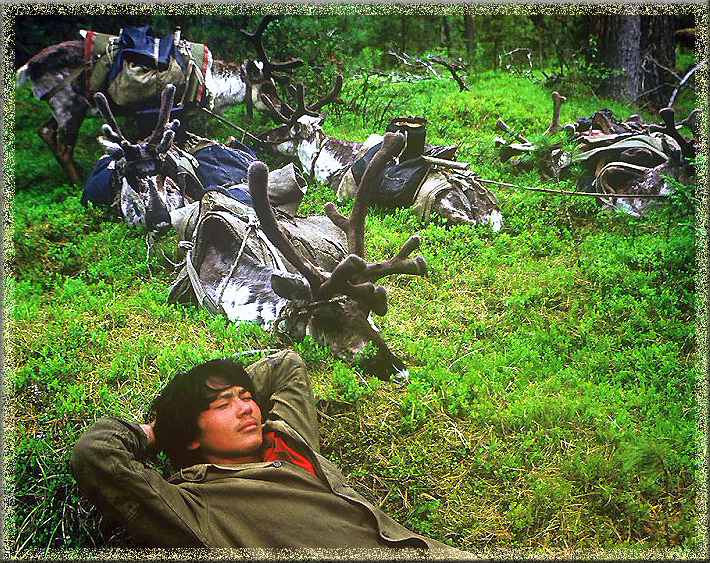 state would always provide and care for them was gone. The Tofala now had to relearn the skills to survive in the new age.
state would always provide and care for them was gone. The Tofala now had to relearn the skills to survive in the new age. 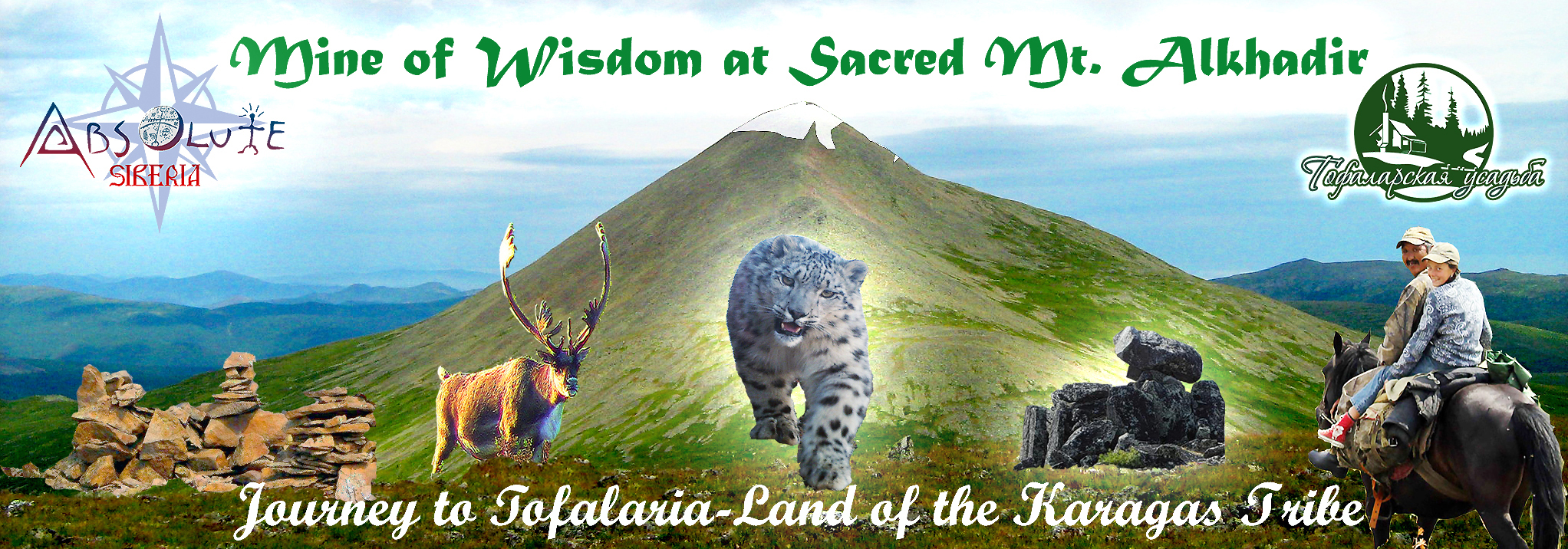
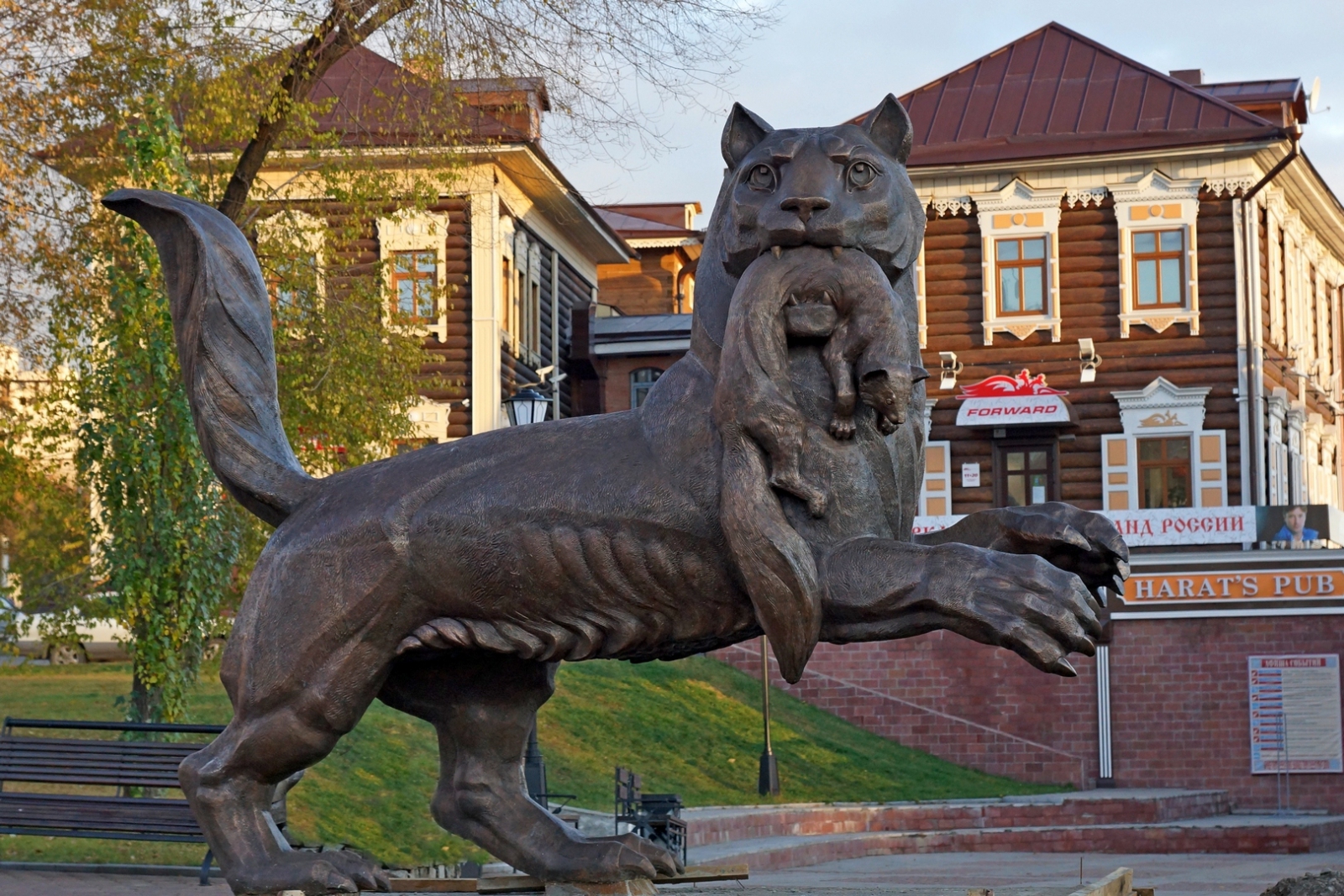 Upon arrival in Irkutsk by morning flight we shall be there at the airport to meet you for a further transfer to your nice downtown 3-star hotel.
Upon arrival in Irkutsk by morning flight we shall be there at the airport to meet you for a further transfer to your nice downtown 3-star hotel. 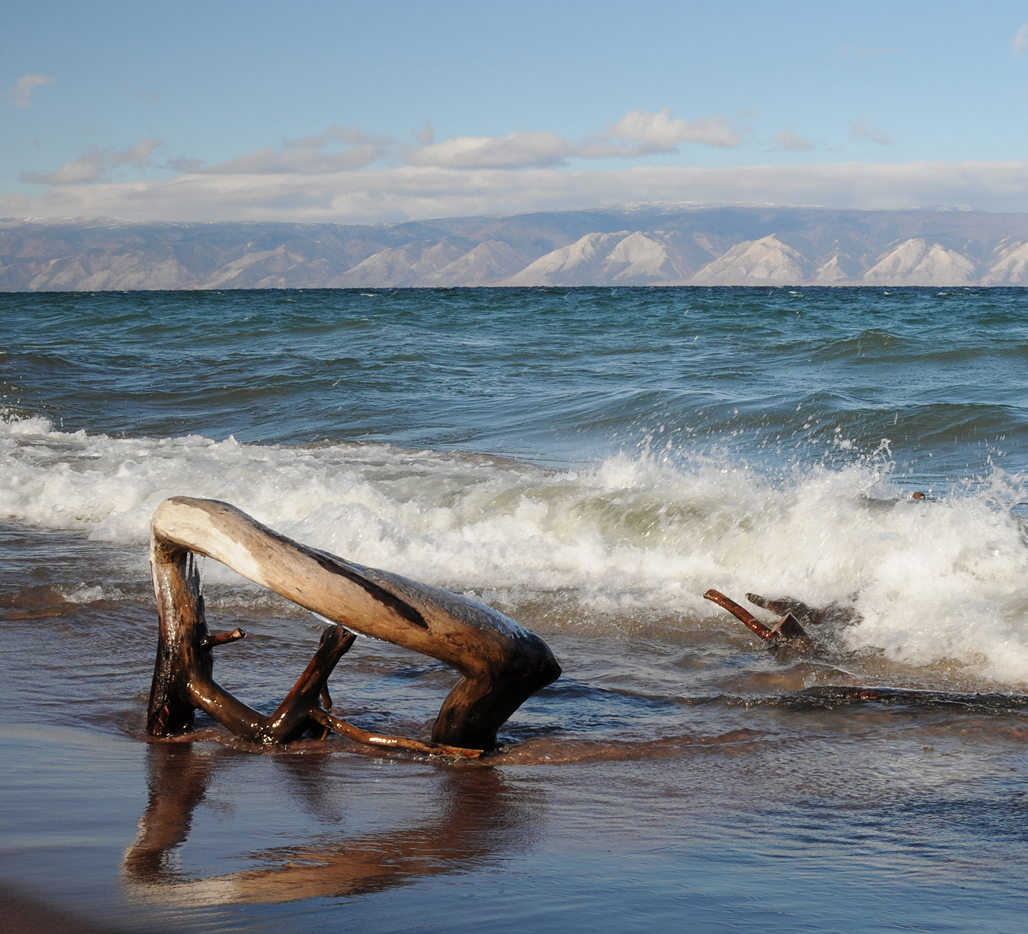 After lunch at the Russian-Siberian restaurant located in recently renovated historical 130th Quarter we shall drive to Listvyanka on lake Baikal ( 60 km away from Irkutsk). Upon arrival at the mouth of the Angara river (the only river to outrun Lake Baikal) we stop near the legendary Shaman-rock to take pictures, listen to your local guide to tell you a story about the mighty father Baikal and his naughty Daughter Angara. Then we will have a tour of Baikal museum which besides interesting collection of exhibits has an aquarium with Baikal fish, crabs and the Baikal freshwater seal – the only aquatic mammal of Lake Baikal which origin remains a mystery.
After lunch at the Russian-Siberian restaurant located in recently renovated historical 130th Quarter we shall drive to Listvyanka on lake Baikal ( 60 km away from Irkutsk). Upon arrival at the mouth of the Angara river (the only river to outrun Lake Baikal) we stop near the legendary Shaman-rock to take pictures, listen to your local guide to tell you a story about the mighty father Baikal and his naughty Daughter Angara. Then we will have a tour of Baikal museum which besides interesting collection of exhibits has an aquarium with Baikal fish, crabs and the Baikal freshwater seal – the only aquatic mammal of Lake Baikal which origin remains a mystery.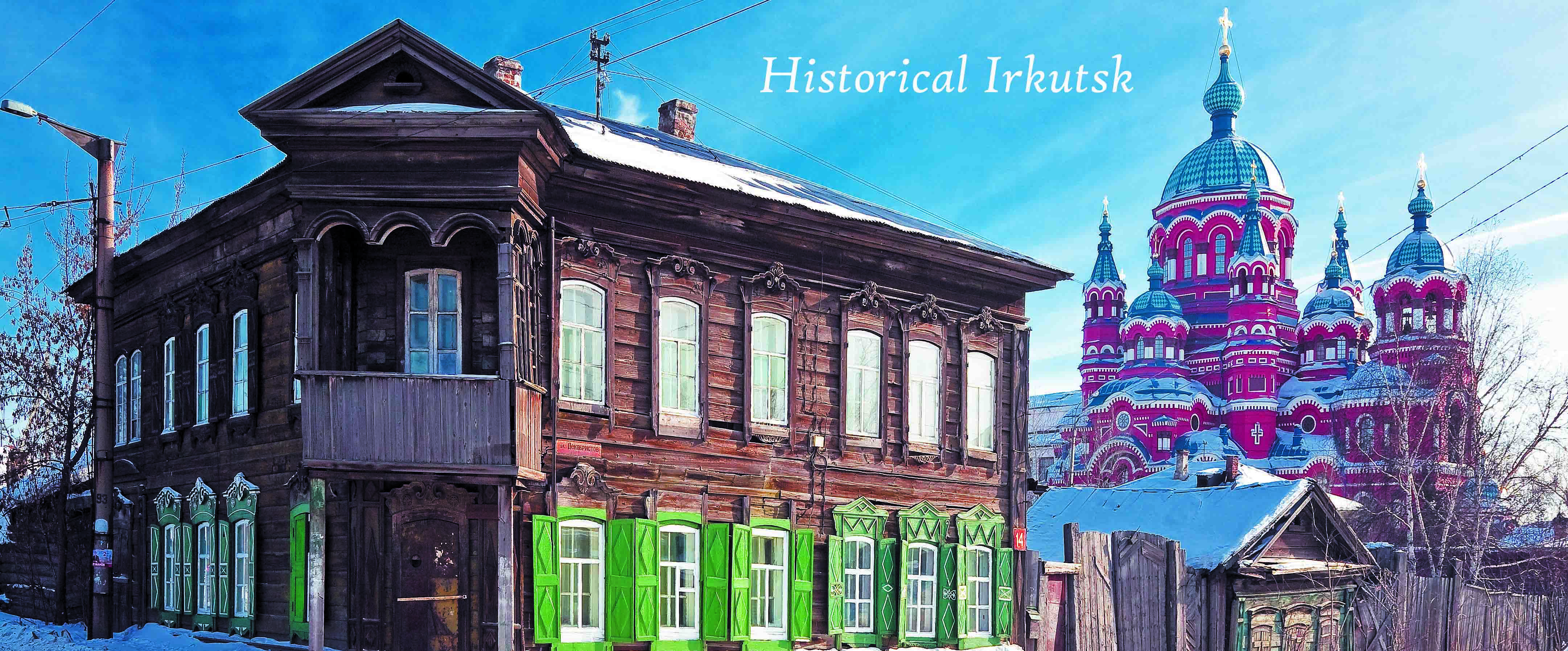
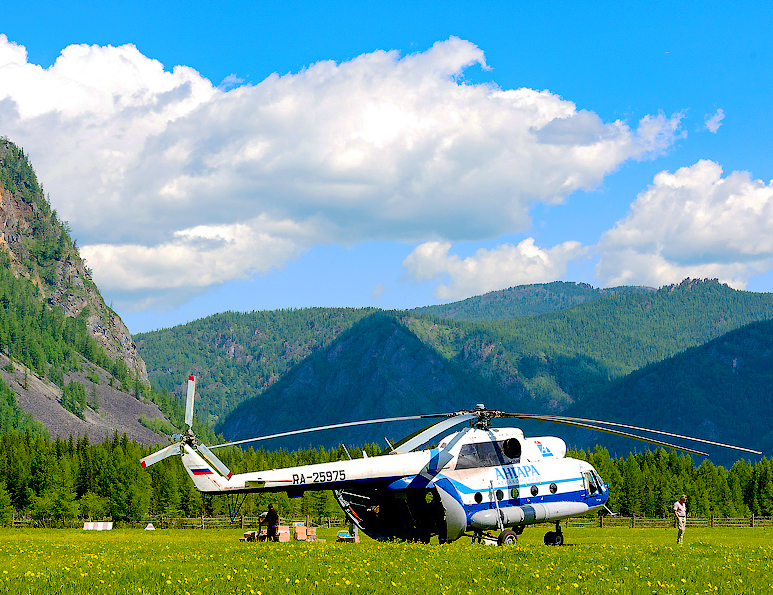 In the morning we arrive at Nizhneudinsk, founded in 1648 on crossroads of trade routes. Hence. the town is evem older than Irkutsk, and still preserves some original wooden structures of the past.
In the morning we arrive at Nizhneudinsk, founded in 1648 on crossroads of trade routes. Hence. the town is evem older than Irkutsk, and still preserves some original wooden structures of the past..jpg) Alygdzher village in the Tofalaria mountains. During the flight we shall be able to enjoy fantastic views of
Alygdzher village in the Tofalaria mountains. During the flight we shall be able to enjoy fantastic views of 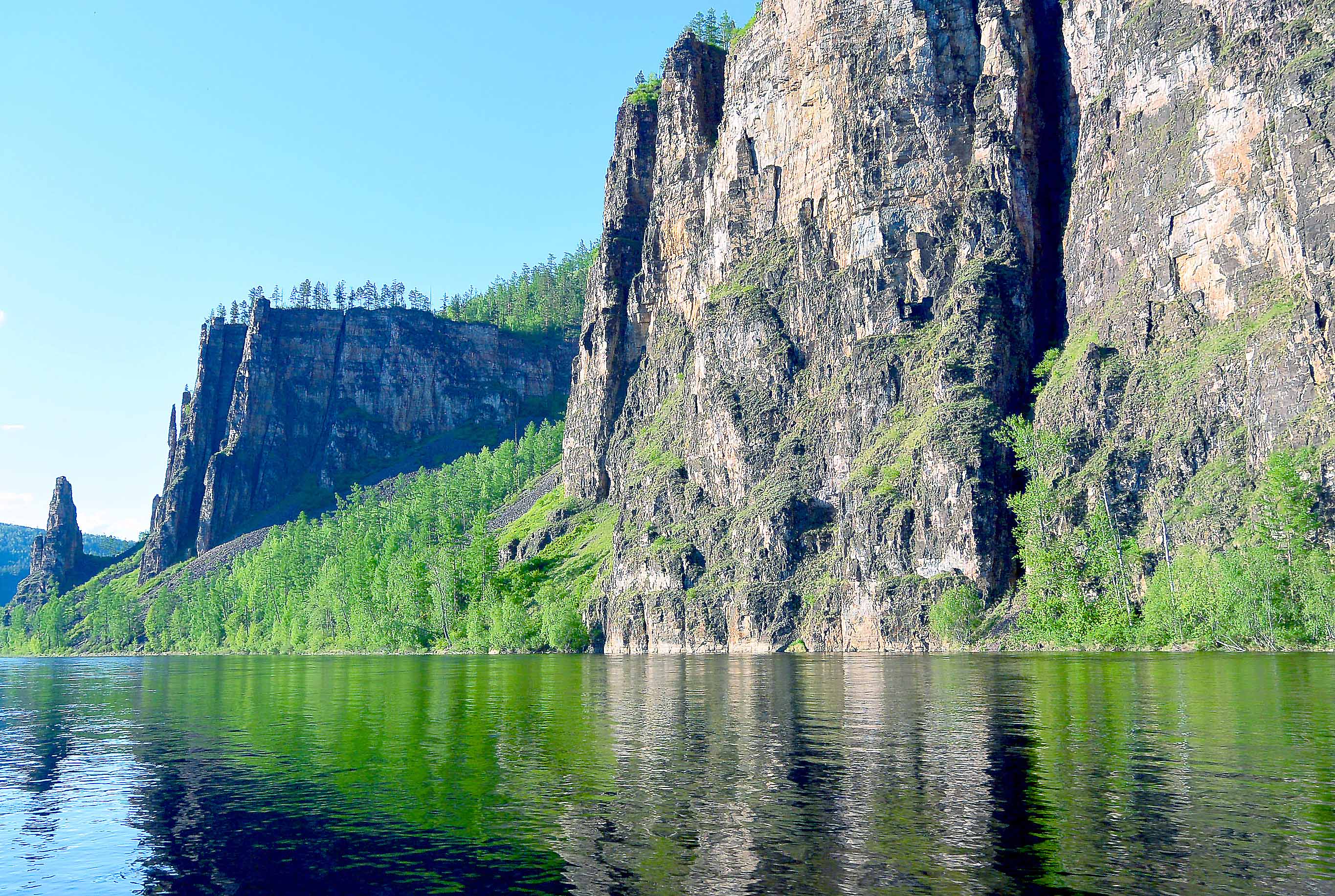 After lunch, the rest of the day will be spent exploring the central village of the Tofalaria – Alygdzher. First, we’ll see the Tofa Ethno-cultural center. Founded in 1991 the Tofa Ethnic Center has now a nice and unique display of original ethnic items of the Tofa people: national clothing, fur, embroidery and birch bark items, paintings and drawings, a few articrafts relating to shamanism as well.as well. Here we will also listen to a guide’s story about the Karagas ( former name for Tofalars), whose origin has many interesting facts, including their similarity ( at DNA level alike) with American Indians.
After lunch, the rest of the day will be spent exploring the central village of the Tofalaria – Alygdzher. First, we’ll see the Tofa Ethno-cultural center. Founded in 1991 the Tofa Ethnic Center has now a nice and unique display of original ethnic items of the Tofa people: national clothing, fur, embroidery and birch bark items, paintings and drawings, a few articrafts relating to shamanism as well.as well. Here we will also listen to a guide’s story about the Karagas ( former name for Tofalars), whose origin has many interesting facts, including their similarity ( at DNA level alike) with American Indians. 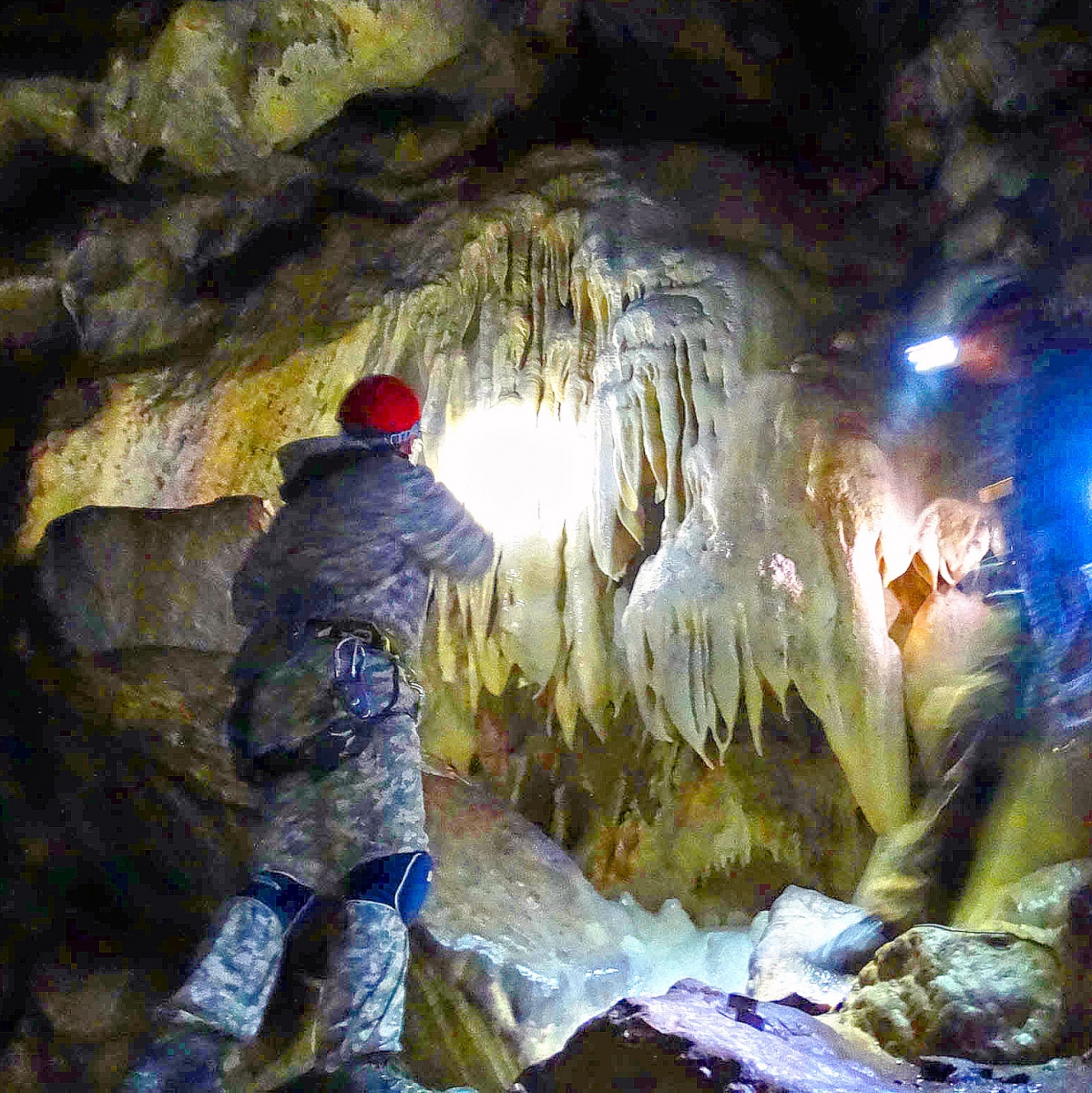
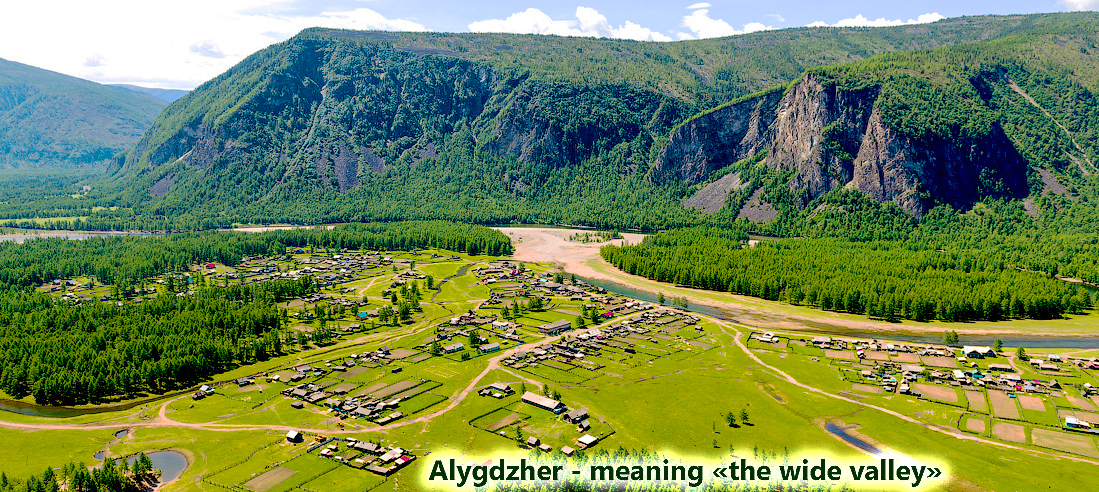
 After breakfast - time to make the aquaintance of the local horses you will be riding and make friends in the upcoming several days. Today we get on horseback for a roundtrip ride to gorgeous Uda river rapids.
After breakfast - time to make the aquaintance of the local horses you will be riding and make friends in the upcoming several days. Today we get on horseback for a roundtrip ride to gorgeous Uda river rapids.
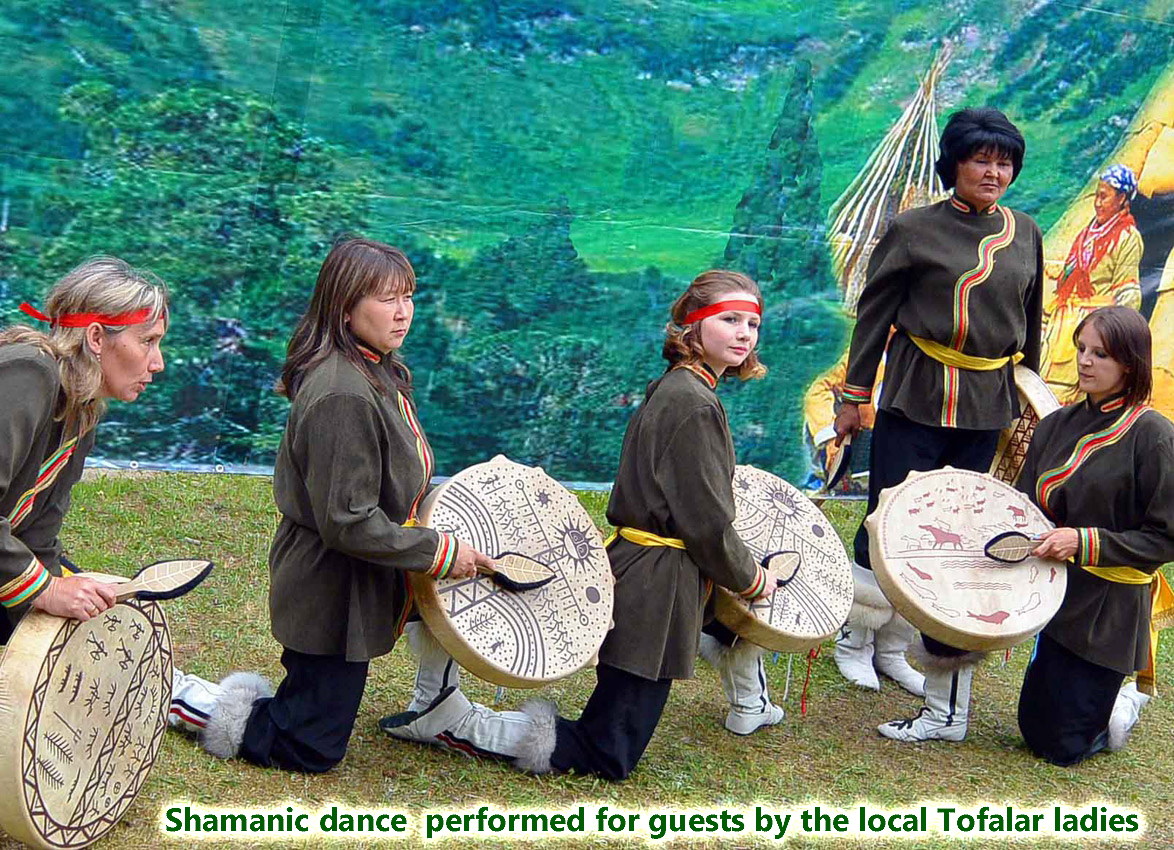 numerous nomadic group who migrated in a huge expanse from the Eastern Sayan down to the river of Yenisey.
numerous nomadic group who migrated in a huge expanse from the Eastern Sayan down to the river of Yenisey.  in set up order Tofa folklore songs called "ulgers," musical poems of wisdom, laconic and perfect in form- the songs named like “Down the Dodot river”, “The Summer Camp”, etc.
in set up order Tofa folklore songs called "ulgers," musical poems of wisdom, laconic and perfect in form- the songs named like “Down the Dodot river”, “The Summer Camp”, etc. 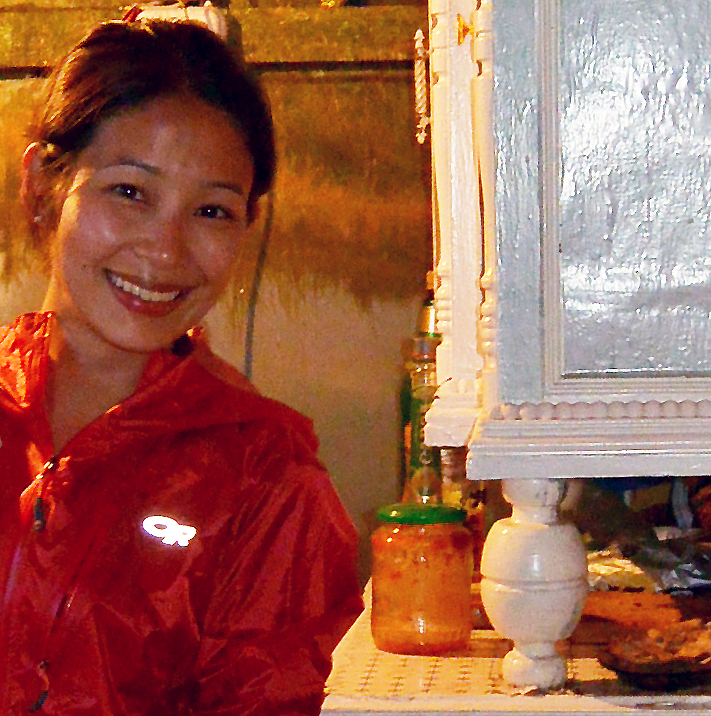 “
“ After breakfast and packing up we start packing up our belongings we get out for our horseback journey to the sacred Mt. Alkhadir.
After breakfast and packing up we start packing up our belongings we get out for our horseback journey to the sacred Mt. Alkhadir. 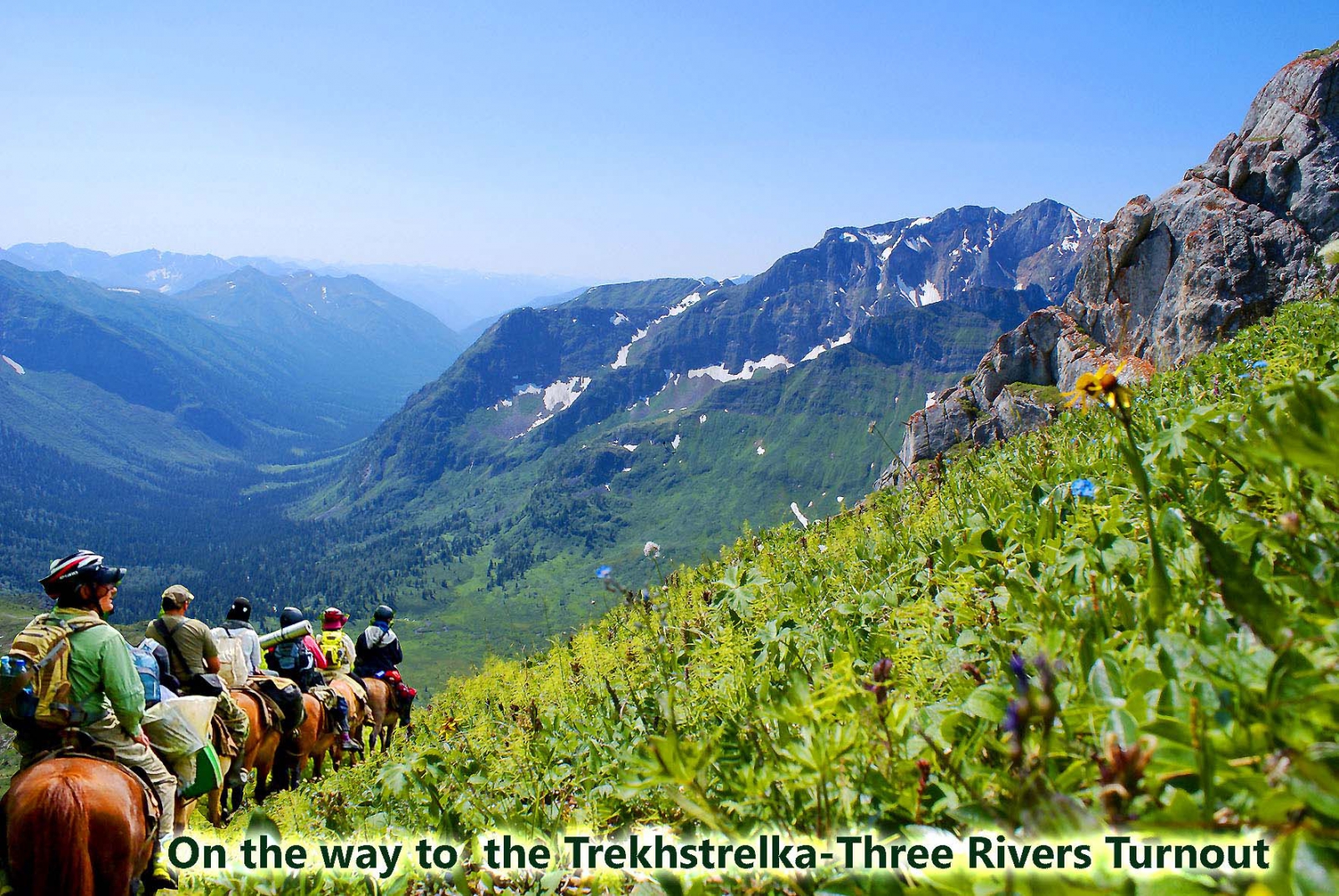 Around 09 a.m. after breakfast we continue our ride through scenic taiga-woods surroundings to the river valley of Khailama. En route we will be passing by the crags where highly valuable, rock butter” (Jew’s tar) containing medicinal properties is in abundance. Once we come across it on
Around 09 a.m. after breakfast we continue our ride through scenic taiga-woods surroundings to the river valley of Khailama. En route we will be passing by the crags where highly valuable, rock butter” (Jew’s tar) containing medicinal properties is in abundance. Once we come across it on 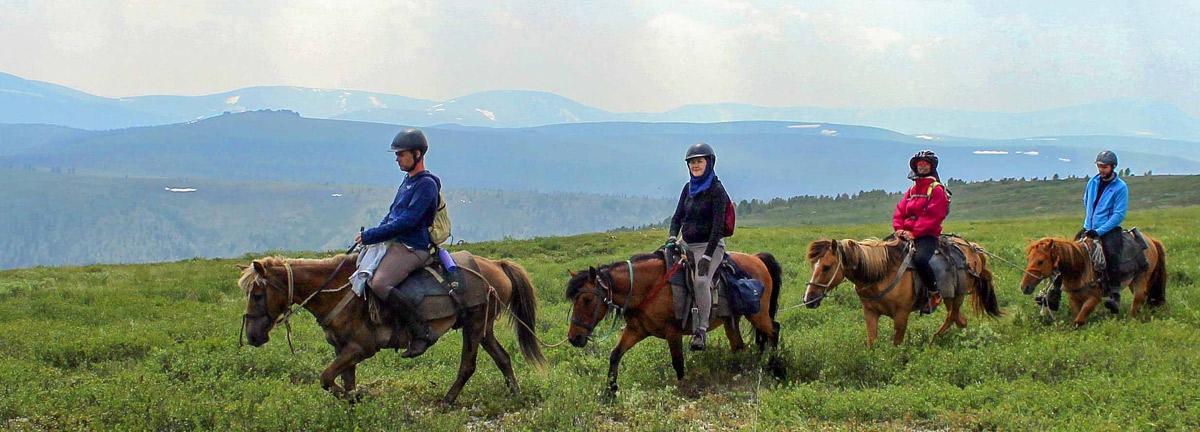
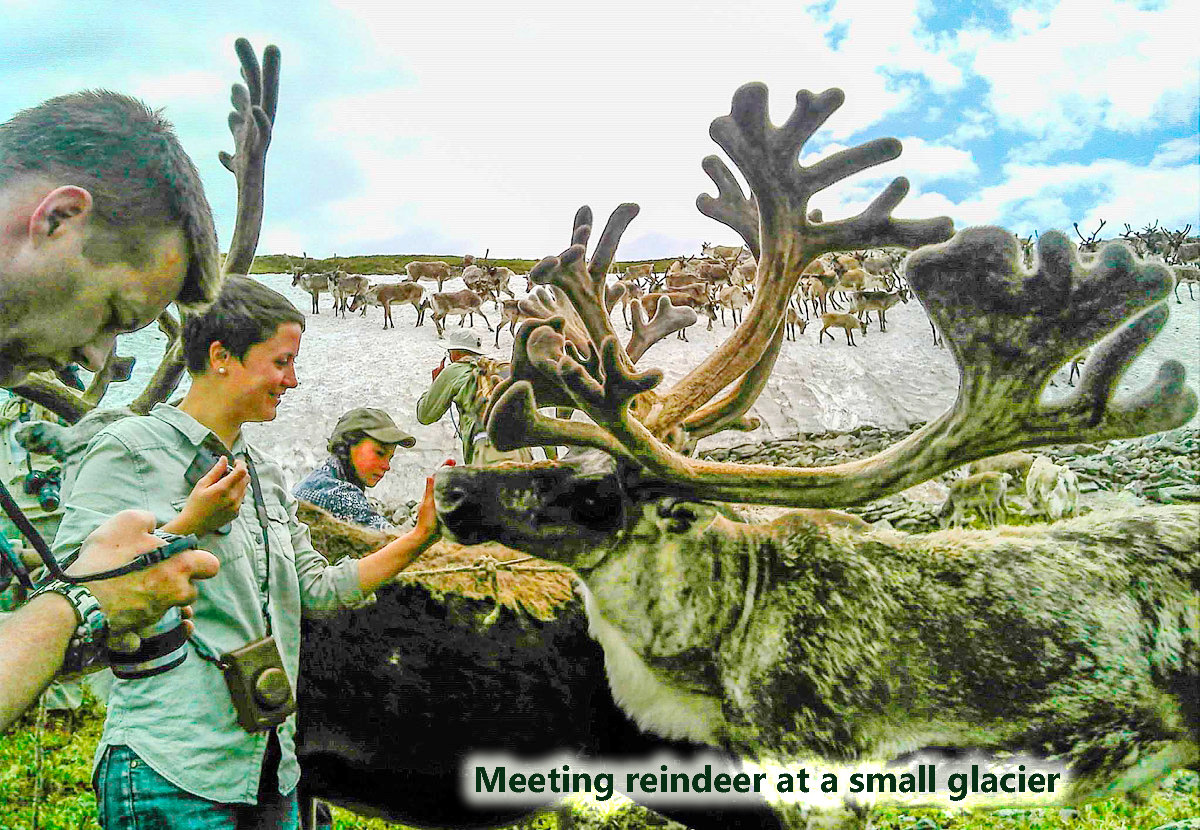 During these 2 days we will proceed to the upper Hunga River crossing some rivulets, often encountering wild animals such as noble deer, sables, fox, moose, wolves and possibly brown bears. Our Tofa guides will also provide us a unique chance to watch dancing with wild musk deer. The Tofa attract the musk deer by means of a special whistle which provides a unique chance to take pictures of this rare deer up close. In the evening of Day 8 we approach the confluence of 2 rivers near to the Hunga River for dinner and overnight in tents or a hunter’s log cabin.
During these 2 days we will proceed to the upper Hunga River crossing some rivulets, often encountering wild animals such as noble deer, sables, fox, moose, wolves and possibly brown bears. Our Tofa guides will also provide us a unique chance to watch dancing with wild musk deer. The Tofa attract the musk deer by means of a special whistle which provides a unique chance to take pictures of this rare deer up close. In the evening of Day 8 we approach the confluence of 2 rivers near to the Hunga River for dinner and overnight in tents or a hunter’s log cabin.  “whites” , then we will hike around three km to see them.
“whites” , then we will hike around three km to see them. 
 Today we will ascent on horseback Tofalaria’s ’s most sacred natural and spiritual site – the Mountain of Alkhadir, highest one on Tofalaria ( 2325 m above sea level). The mountain is famed for a number of ancient legends and very few historical facts that the tour organizer will share with you after the Alkhadir ascend..
Today we will ascent on horseback Tofalaria’s ’s most sacred natural and spiritual site – the Mountain of Alkhadir, highest one on Tofalaria ( 2325 m above sea level). The mountain is famed for a number of ancient legends and very few historical facts that the tour organizer will share with you after the Alkhadir ascend..  expedition under Jöchi, Chinggis Khan’s eldest son, went along this mountain range trail to secure the submission of many of the forest tribes living along the Yenisey River in southern Siberia, including the Oyirat and the Kyrgyz. When in 1209 the Uighurs of Turfan renounced their support for the Qara Qithay and were peacefully incorporated into the confederation, Jöchi returned to the Yenisey in 1217 and, with help from the Oiyrat, put down a regional revolt led by the Tumat. Following a purge of the rebels all of the remaining forest tribes were absorbed into the Mongol confederation. And each time Jochi was using this trail road. There’s a concept of this tour product developer, that it was Jochi who named the two mountains of this mountain range as “Alkhadir” and “Khan-Bargut”.
expedition under Jöchi, Chinggis Khan’s eldest son, went along this mountain range trail to secure the submission of many of the forest tribes living along the Yenisey River in southern Siberia, including the Oyirat and the Kyrgyz. When in 1209 the Uighurs of Turfan renounced their support for the Qara Qithay and were peacefully incorporated into the confederation, Jöchi returned to the Yenisey in 1217 and, with help from the Oiyrat, put down a regional revolt led by the Tumat. Following a purge of the rebels all of the remaining forest tribes were absorbed into the Mongol confederation. And each time Jochi was using this trail road. There’s a concept of this tour product developer, that it was Jochi who named the two mountains of this mountain range as “Alkhadir” and “Khan-Bargut”.  After breakfast, we bid farewell to our excellent and hospitable Tofa trail guides, board Soviet Army Ural 4WD first class truck. We have an 8-hour drive through wildlife area with a few stops en route to the town of Tulun, a district center.
After breakfast, we bid farewell to our excellent and hospitable Tofa trail guides, board Soviet Army Ural 4WD first class truck. We have an 8-hour drive through wildlife area with a few stops en route to the town of Tulun, a district center. .jpg)
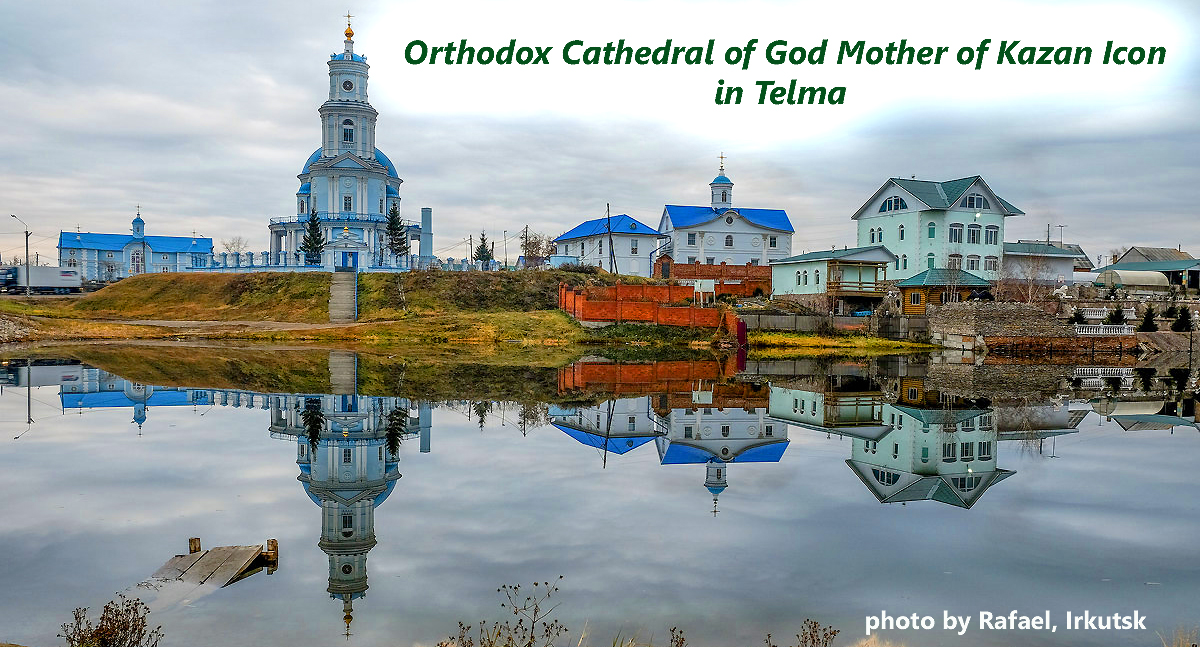
.jpg)










